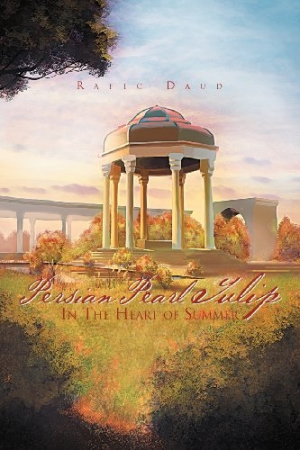Persian Pearl Tulip
It’s 2004 and Lisbon-born Jan Demir, at age thirty, is a very successful businessman content with his jet-setting lifestyle and girlfriend of the moment. Then he travels to Iran to meet a business contact, where he discovers the opinionated and beautiful Golnaz, also known as Naz: “Was this what love at first sight was like? He had never fallen—truly fallen—in love before. Excitement danced inside him, and he found himself infatuated not just with a local Persian girl, but with Persian culture.”
An omniscient narrator details the unfolding relationship between the two over a period of about two months and across several international locales, from Tehran and the Iranian city of Shiraz to Lisbon, London, and Paris.
Persian Pearl is Rafic Daud’s debut novel, and he hints that it’s somewhat autobiographical since he and the protagonist share many of the same attributes: well-educated, successful international entrepreneurs, fluent in many languages, and a love of travel.
Daud has a wonderfully visual way with words: “Her expressive eyes locked on his, causing sweat to percolate on his brow.”
While the book suffers from some problems with tense and the occasional missing word, readers will not find that too much of a distraction from the story as they wonder if the two will ever connect and become a couple. Here’s Naz’s first impression of Jan: “This guy was acting so cocky he seemed self-centered; he didn’t even look like he was capable of empathizing with other human beings, which normally should have raised a flag.”
Intertwined in their evolving relationship is the famous medieval Persian poet Hafez, whose writings are said to reveal personal destiny. It is Hafez’s shrine that Jan and Naz, a modern Iranian woman educated and working in Great Britain, visit along with her cousin and chaperone Maryam. There, Jan comes to believe that Hafez’s poetry tells him that Naz is his destiny and the chase ensues, much to the detriment of his job and the chagrin of longtime business partner, Pascoal.
Readers who enjoy a good romance story and discovering distant cities and cultures will find this book to their liking. The author also intersperses interesting information about local Iranian cuisine and translates Farsi phrases.
The novel’s first chapter is confusing on the first reading; it appears to take place fifty years after the rest of the story, but upon rereading the chapter, it answers questions left hanging in the final chapter.
Daud does a good job of showing that the ever-confident Jan has some chinks in his self-esteem because of his money-poor upbringing. And the conversational dance between Jan and Naz reflects real struggles as two very different people from two very different cultures try to understand one another. “Love is not a normal state, but something out of the ordinary,” contemplates Jan. “Therefore, to mortals like you and me, Hafez seemed to be saying, love can only be a form of insanity.”
Reviewed by
Robin Farrell Edmunds
Disclosure: This article is not an endorsement, but a review. The publisher of this book provided free copies of the book and paid a small fee to have their book reviewed by a professional reviewer. Foreword Reviews and Clarion Reviews make no guarantee that the publisher will receive a positive review. Foreword Magazine, Inc. is disclosing this in accordance with the Federal Trade Commission’s 16 CFR, Part 255.

